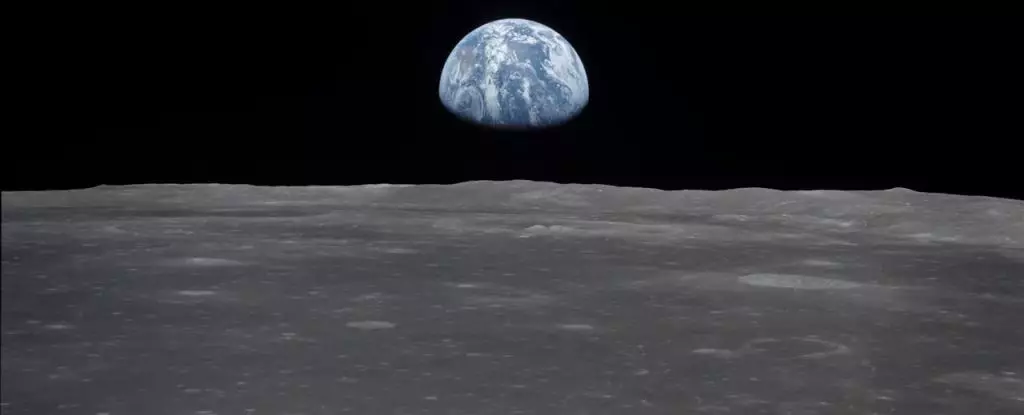The Moon, often thought of as a barren and desolate place in space, actually has a thin layer of gasses surrounding it. This layer of gasses, known as the exosphere, has puzzled scientists for quite some time. The lack of a magnetic field around the Moon should have led to the dissipation of this exosphere due to solar activity, yet it continues to persist. Recent research has shed light on the source of these gasses and how they are replenished.
Scientists, led by geochemist Nicole Nie from the Massachusetts Institute of Technology (MIT), have discovered that tiny micrometeorites are responsible for maintaining the lunar exosphere. These minuscule particles, barely the size of dust grains, constantly collide with the lunar surface, causing the vaporization of lunar dust and releasing atoms into the space surrounding the Moon. This impact vaporization process has been identified as the dominant mechanism in creating the Moon’s atmosphere.
Studying the lunar atmosphere poses a challenge due to its diffuse nature. Despite the detection of various atomic components in the exosphere by detectors left by the Apollo missions, determining the exact origins of these gasses has proven difficult. While micrometeorite impacts have been proposed as a significant contributing factor, as well as ion sputtering caused by solar wind, understanding the complete picture required further investigation.
To gain a more comprehensive understanding of the processes generating and maintaining the lunar exosphere, Nie and her team analyzed data from the Lunar Atmosphere and Dust Environment Explorer (LADEE), a lunar orbiter that operated between 2013 and 2014. The data revealed that both micrometeorite impacts and solar influences play a role in the composition of the lunar exosphere. During meteorite showers, an increase in atmospheric atoms was observed, indicating the impact of micrometeorites. Conversely, changes in the atmosphere’s atoms during eclipses highlighted the influence of the Sun on the lunar exosphere.
To further validate their findings, the researchers examined samples of Moon dirt collected during the Apollo missions. By analyzing the presence of potassium and rubidium, elements known to exist on the Moon and easily vaporized upon impact, the team was able to distinguish between the effects of micrometeorite impacts and ion sputtering. The results indicated that while both processes contribute to the lunar exosphere, the impact of micrometeorites is more than double that of solar wind.
The discoveries regarding the sources of the Moon’s atmosphere not only enhance our understanding of Earth’s satellite but also have broader implications for planetary science. Similar processes may be occurring on other celestial bodies in the Solar System, such as asteroids and other moons. Missions aimed at retrieving samples from these bodies could provide further insights into the mechanisms shaping their atmospheres. For instance, the European Space Agency’s planned sample return mission to Martian moon Phobos could offer valuable data for comparative studies in the future.
The unsolved mystery of the Moon’s atmosphere has finally been unraveled through meticulous research and analysis. The role of micrometeorite impacts in sustaining the lunar exosphere has been established, shedding light on the dynamic processes at play in our celestial neighborhood. By leveraging data from past missions and ongoing exploration efforts, scientists continue to deepen their understanding of not only the Moon but also the broader Solar System.


Leave a Reply